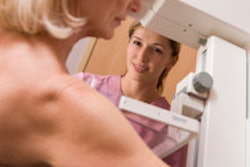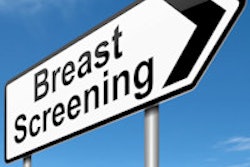
False-positive mammography rates are highest among women younger than 50, which is important for women to understand as they make decisions about when to begin screening, according to a study published online in the Annals of Internal Medicine.
The study was published at the same time as the U.S. Preventive Services Task Force's (USPSTF) final breast cancer screening recommendations, which caution that the number of deaths averted would be much smaller among those ages 40 to 49 than for older women, even though screening mammography may reduce mortality. Also, the number of false-positive exams and unnecessary biopsies would be much higher in the 40 to 49 group.
Led by Dr. Heidi Nelson of Oregon Health and Science University, the researchers used data from five Breast Cancer Surveillance Consortium registries, including more than 400,000 women ages 40 to 89 who were screened with digital mammography between 2003 and 2011. Of this total cohort, 2,963 were diagnosed with invasive cancer or ductal carcinoma in situ (DCIS) within 12 months of screening. The study was supported by the Agency for Healthcare Research and Quality and the National Cancer Institute (Ann Int Med, January 12, 2016).
The researchers found the highest false-positive mammography rates in women younger than 50, although false positives were common in all age groups. Younger women were also more likely to be recommended for additional imaging, even though rates of invasive cancer were lowest in this population.
| False positives and outcomes by age group | |||
| Age | False positives per 1,000 women | Additional imaging recommended | Screen-detected invasive cancer |
| 40-49 | 121.2 | 124.9 | 2.2 |
| 50-59 | 93.2 | 98.5 | 3.5 |
| 60-69 | 80.8 | 88.7 | 5.8 |
| 70-79 | 69.6 | 79 | 7.2 |
| 80-89 | 65.2 | 74.4 | 7.1 |
Nelson and colleagues also found that false-positive rates were higher per 1,000 women screened in those with particular risk factors such as a family history of breast cancer, previous benign biopsy results, high breast density, and, for younger women, low body mass index.
In any case, the group hopes the research will help women make more-informed decisions about breast cancer screening.
"The results of this study may be useful for women and clinicians considering the individual benefits and harms of screening, as well as for health service administrators and planners determining the implications of screening for populations," the researchers concluded.




















